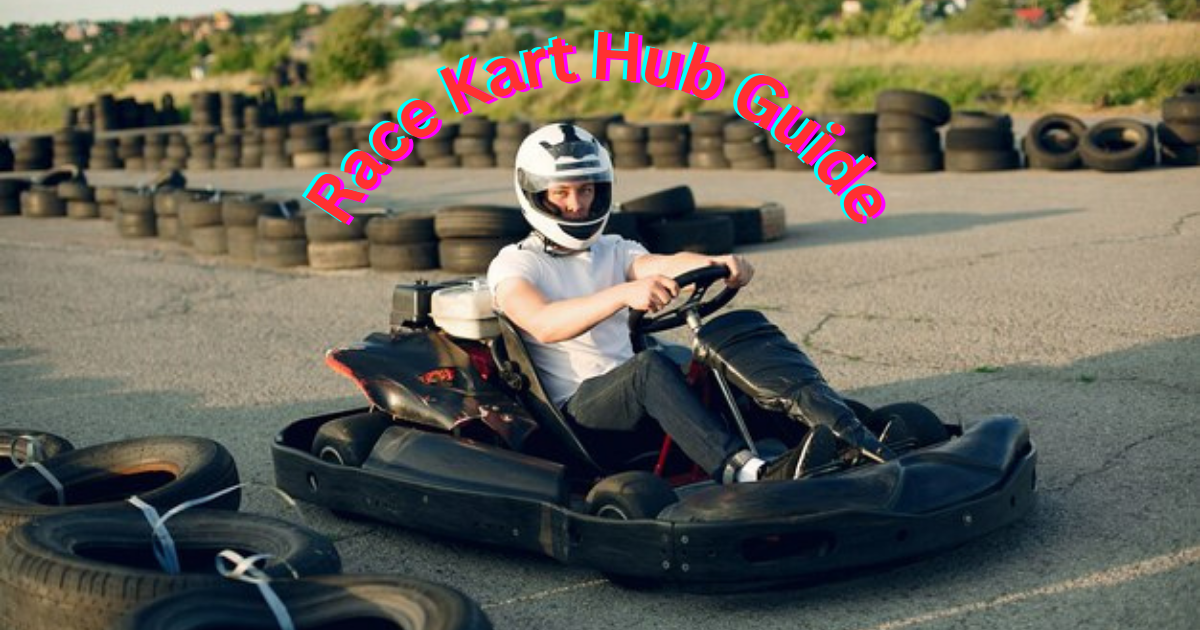Understanding Go-Karting Basics
Small, open-wheel vehicles, often known as karts or go-karts, are used in the motorsport of go-karting. These cars are frequently utilized for recreational purposes at karting tracks or in racing contests. Depending on their type, karts can attain a range of speeds, making them appropriate for both novice and expert racers.
For people who want to start go-karting, the Race Kart Hub is a great resource because it provides comprehensive equipment instructions, track navigation, and safety advice. Knowing the fundamentals is essential, whether you’re a novice searching for entry-level guidance or a racer trying to improve your performance.
Types of Go-Karts
Various go-kart varieties are available based on your racing goals and ability level. Here is a brief synopsis:
Rental go-karts are available at the majority of commercial karting courses and are frequently utilized for leisure karting. They are ideal for novices because they are safer and slower.
Racing Go-Karts: Professional races use these fast-moving karts. They are built for speed and agility and have strong engines. Professional go-karts can go as fast as 60 to 70 miles per hour.
Off-road go-karts: With stronger springs and wheels made to tackle dirt roads and bumpy tracks, these karts are built for rough terrain.
Choosing the Right Kart for You
Your degree of experience and your goals will determine which kart is best for you. The easiest approach to gain a feel for the sport if you’re new to it is to hire a go-kart and race it casually at a nearby track. Purchasing a high-performance racing kart from a reliable manufacturer is crucial for more dedicated racers. In order to assist you in making an informed choice, the Race Kart Hub Guide offers thorough evaluations and comparisons of the top karts available.
Essential Go-Karting Equipment
It’s crucial to have the right equipment before you hit the track. Having the proper gear might mean the difference between a fun day at the track and a risky accident, so safety should always come first.
Helmet: To protect your head in the event of an accident or collision, you must wear a high-quality helmet.
Racing Suit: For individuals competing in competitive go-kart racing, a fire-resistant racing suit is advised. It offers more comfort and security.
Gloves and Boots: Wearing the right racing gloves and boots improves control and lowers the chance of injury by ensuring a better grip on the wheel and pedals.
Neck Brace: By offering extra support during abrupt turns or collisions, a neck brace can reduce the chance of neck injuries during high-speed racing.
The Race Kart Hub Guide provides a thorough analysis of necessary equipment, along with product suggestions according on your needs and ability level.
Mastering Racing Techniques
It’s time to increase your racing abilities when you’ve mastered the fundamentals and have the appropriate gear. Here are a few basic racing strategies:
Cornering: Being able to take corners well is one of the most crucial skills in go-kart racing. Beginners frequently make the mistake of accelerating too early or braking too late in a curve. Braking before turning a bend and then accelerating progressively out of it are crucial.
Braking: You can cut down on lap time by learning how to brake effectively. You may maintain speed without losing control of the kart by using proper braking tactics. Avoid abrupt stops and instead practice steady, smooth braking.
Weight Transfer: The way you distribute your body weight affects how well a go-kart performs. You can improve your traction and control by shifting your weight or leaning into curves.
Drafting: To lessen air resistance, drafting entails following closely behind another kart. You may increase your speed using this method without consuming more energy. You can use the additional speed to pass your opponent once you’re close enough.
Maintaining Your Go-Kart
Maintaining your go-kart on a regular basis is essential to guaranteeing optimal performance. Your lap times can be greatly impacted by even small problems like a loose bolt or worn tires. Here are some fundamental upkeep pointers:
Tires: Prior to each race, check the wear and tire pressure. Improved grip and control on the track are provided by properly inflated tires.
Engine: To maintain the engine’s smooth operation, check the air filters and engine oil on a regular basis.
Brakes: Check the brake pads and fluid levels to ensure the brakes are operating correctly.
Chassis: Check for wear and tear on the chassis, particularly following a collision. Steering and handling may be impacted by a bent chassis.
The Race Kart Hub Guide offers step-by-step maintenance guides to help you keep your kart in top condition.
Conclusion
Whether you’re racing for fun or want to participate at a higher level, go-karting is an exciting and approachable motorsport that offers enjoyment for people of all ages. You can get the most out of this thrilling pastime if you have the proper kart, equipment, and technique. For all things go-karting, the Race Kart Hub Guide is your go-to source. It offers reviews, guidance, and ideas to help you get the most of your racing experience.
You may take on the track with confidence, hone your abilities, and experience the thrilling world of go-kart racing by following this tutorial. To become a more competitive racer, always put safety first, keep your kart in good condition, and work on your technique. Have fun karting!
FAQS
Is it safe for beginners to go go-kart?
As long as the right precautions are taken, go-karting is safe for novices. Commercial circuits encourage beginners to begin with rental karts since they are built with safety features to reduce risk.
What is the top speed of a go-kart?
A go-kart’s speed is contingent upon its type. Racing karts can reach speeds of up to 60–70 mph, whereas rental karts typically reach 20–30 mph.
What attire is appropriate for go-karting?
You should wear closed-toe shoes, gloves, and a helmet at the very least. Wearing a full racing suit and a neck brace for extra protection is advised for competitive racing.
How can I get better at go-kart racing?
The secret to being better at go-karting is practice. Concentrate on being proficient at weight distribution, braking, and cornering. For more advice and practice, you may also join local karting clubs or watch videos of expert racers.
Is a specific license required to race a go-kart?
A license is not required for recreational go-karting at rental courses. You might, however, need to get a karting license from your neighborhood motorsport organization in order to compete in racing.









